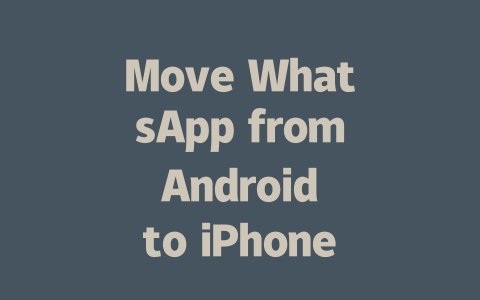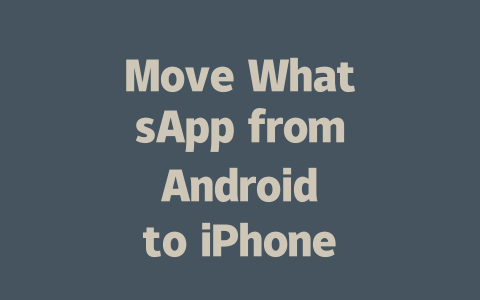You ever feel like you’re drowning in a sea of information but still missing out on the latest news? You’re not alone. With so many sources claiming to have the scoop, it’s hard to know where to turn. Let me share something that worked for me: a simple system I developed over time to stay informed without feeling overwhelmed.
Why Staying Informed Matters More Than Ever
Let’s face it—staying updated isn’t just about keeping up with gossip anymore. It’s essential for making smart decisions in every area of life. Whether it’s knowing how global trends might affect your job or finding out which new tech gadget could make your life easier, being in the loop gives you an edge.
But here’s the catch: not all news is created equal. Some outlets focus on sensational headlines while others provide well-researched insights. The trick is figuring out what works best for you. That’s where my approach comes in.
I remember when a friend asked me, “How do you manage to read so much without getting stressed?” At first, I didn’t think much of it, but then I realized there are some tricks I use unconsciously. Now, let’s break them down step by step so you can try this too.
Step One: Finding Reliable Sources
Why does picking the right source matter? Because Google’s search robots look at content meaning and credibility when ranking pages. If you want trustworthy info, you need to go straight to the horse’s mouth—or in this case, reputable websites.
Here’s what I’ve learned over years of trial and error:
For instance, last year, I found myself confused about climate change policies. Instead of relying on social media buzzwords, I went straight to NASA’s website (yes, they have a section dedicated to climate science!) and compared their findings with data from the UN’s IPCC report. By doing this, I built a clearer picture without wading through misinformation.
And hey, don’t forget—you can always check fact-checking sites like Snopes or FactCheck.org. These platforms verify claims and save you hours of headache. Plus, using tools like these shows you care about accuracy, which builds trust with anyone you share info with.
Step Two: Setting Up Alerts and Notifications
Now, here’s another big hurdle: even if you find great sources, how do you keep track of updates without wasting hours scrolling? This is where setting up alerts saves the day.
Let me explain why this works: imagine your brain as a filter. When you set up systems to push relevant information directly to you, you free up mental energy for other things. Here’s how I do it:
Types of Alerts to Consider
Here’s a quick table comparing popular options:
| Platform | Best For | Customization Options | Frequency | Cost |
|---|---|---|---|---|
| Google Alerts | Keyword-based tracking | Specific phrases, regions | Daily or instant | Free |
| Feedly | RSS feeds aggregation | Topics, tags | Continuous stream | Free/Paid |
| Magazine-style browsing | Categories, publishers | User-defined | Free |
Notice how each option caters to different needs? Pick one that aligns with your habits.
Step Three: Engaging Actively with Content
Reading headlines isn’t enough anymore. To truly stay updated, engage actively with the material. What does that mean? Well, instead of passively consuming, take notes, ask questions, and discuss what you learn.
Take my experience, for example. Last month, I read an article about advancements in renewable energy. Rather than moving on after finishing it, I jotted down key points and shared them with a colleague who’s passionate about sustainability. Guess what happened? We ended up brainstorming ideas for a project together!
Here’s how you can apply this method:
Trust me, engaging like this doesn’t just boost your understanding—it also makes staying informed feel less like a chore and more like a rewarding habit.
If you try any of these methods, drop me a line! I’d love to hear what works best for you—or maybe we can troubleshoot challenges together. After all, learning should be fun, right?
If you’re thinking about multitasking and using your Android phone while transferring WhatsApp data to your iPhone, it’s really not a great idea. The process requires a solid connection between the two devices, and any interruptions could spell trouble. Let’s say you pick up your Android phone mid-transfer to check some emails or scroll through social media. That simple action might cause the transfer to pause or even stop entirely. You don’t want to risk losing part of your chat history after waiting so long for the process to finish.
Now, imagine this scenario: you’ve got 5-12 years of chats with family and friends stored on your Android, and all that data is being carefully moved over to your new iPhone. If you start fiddling with your old phone during this critical time, there’s a real chance the transfer won’t complete properly. It’s better to just let the process happen without interference. Trust me, those notifications can wait, and your WhatsApp memories will thank you later.
FAQ
# Can I transfer my entire WhatsApp chat history from Android to iPhone?
Yes, you can transfer your entire WhatsApp chat history, including messages and media, using the built-in chat transfer feature. However, ensure that both devices are connected to the same Wi-Fi network and that you have enough storage space on your iPhone for the transfer.
# Is it possible to move WhatsApp data without losing any messages?
Absolutely, as long as you follow the correct steps. Use the “Chat Backup” feature on your Android device before initiating the transfer process. This ensures all your conversations and files remain intact during the migration.
# How long does the WhatsApp transfer process take for 5-12 years of chat history?
The time required depends on the size of your chat history and the speed of your internet connection. For extensive histories spanning 5-12 years, expect the process to take anywhere from 30 minutes to a few hours.
# Do I need an active internet connection to move WhatsApp from Android to iPhone?
Yes, both devices must be connected to the internet during the transfer process. Additionally, having a stable Wi-Fi connection is recommended to avoid interruptions and ensure smooth data migration.
# Can I still use my Android phone while transferring WhatsApp data to my iPhone?
No, it’s best to avoid using your Android device actively during the transfer process. Doing so might disrupt the connection and lead to incomplete transfers or lost data.




